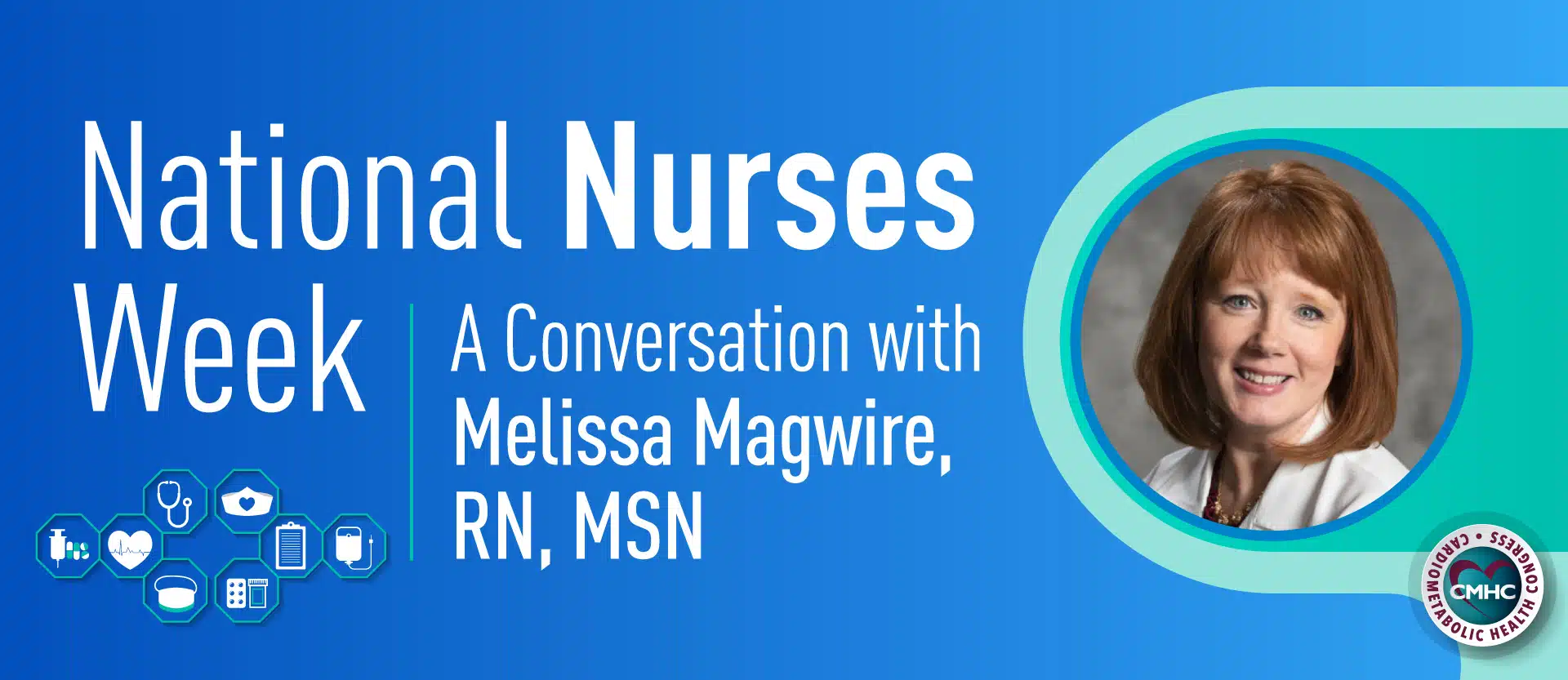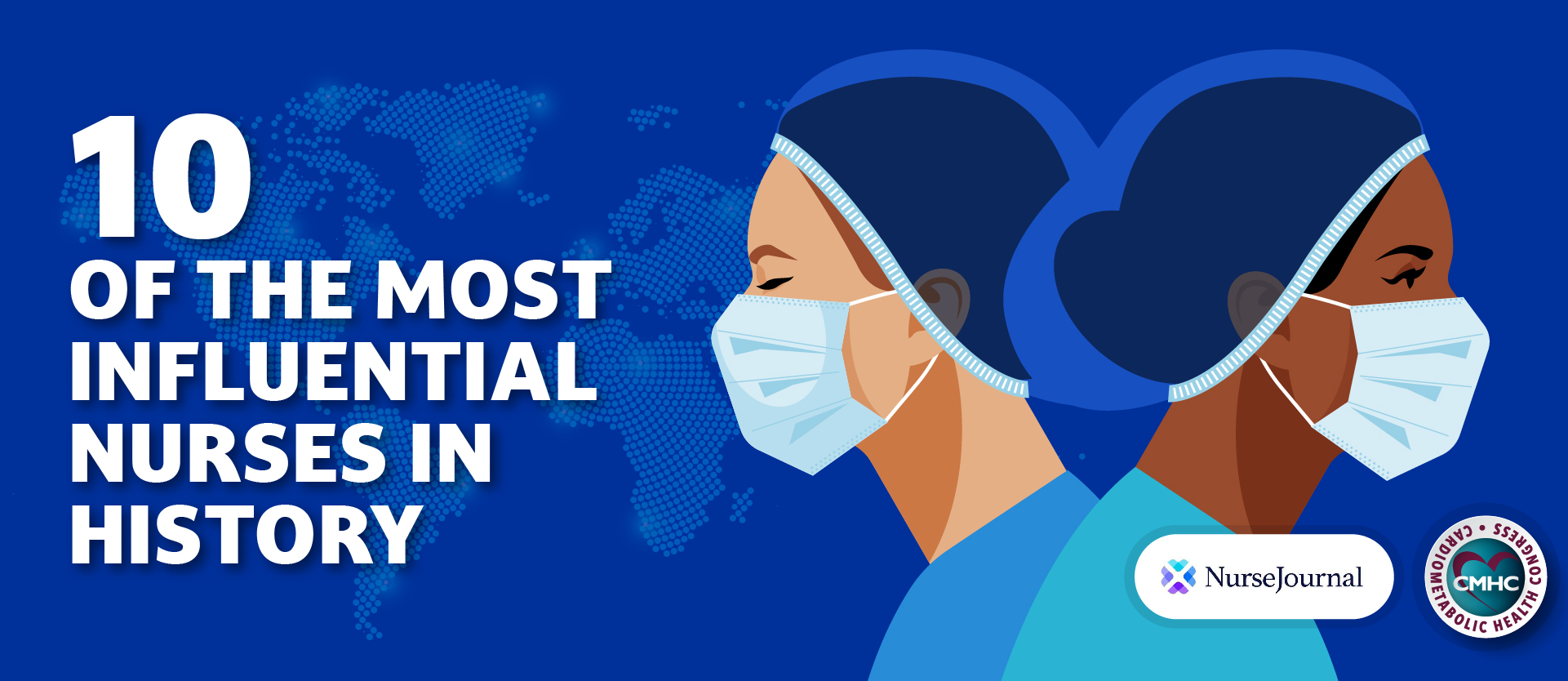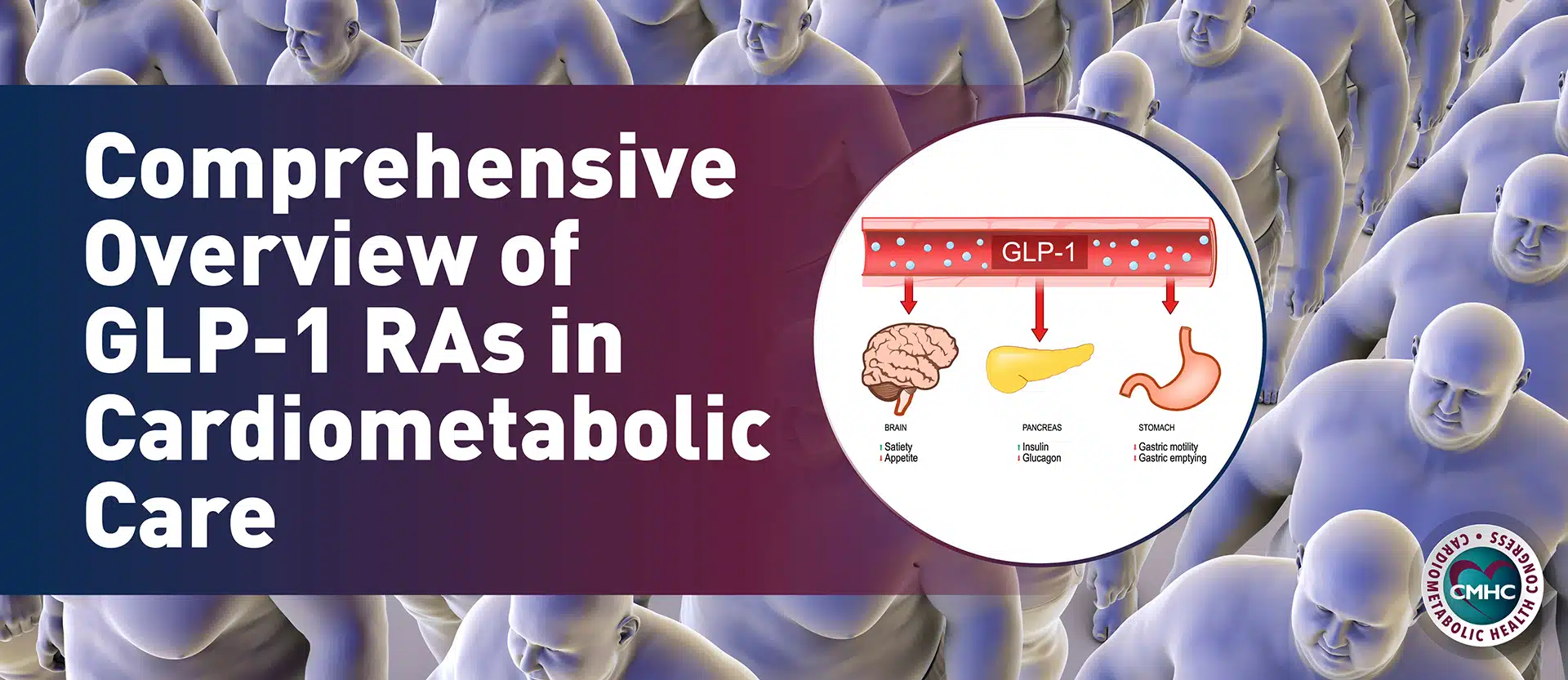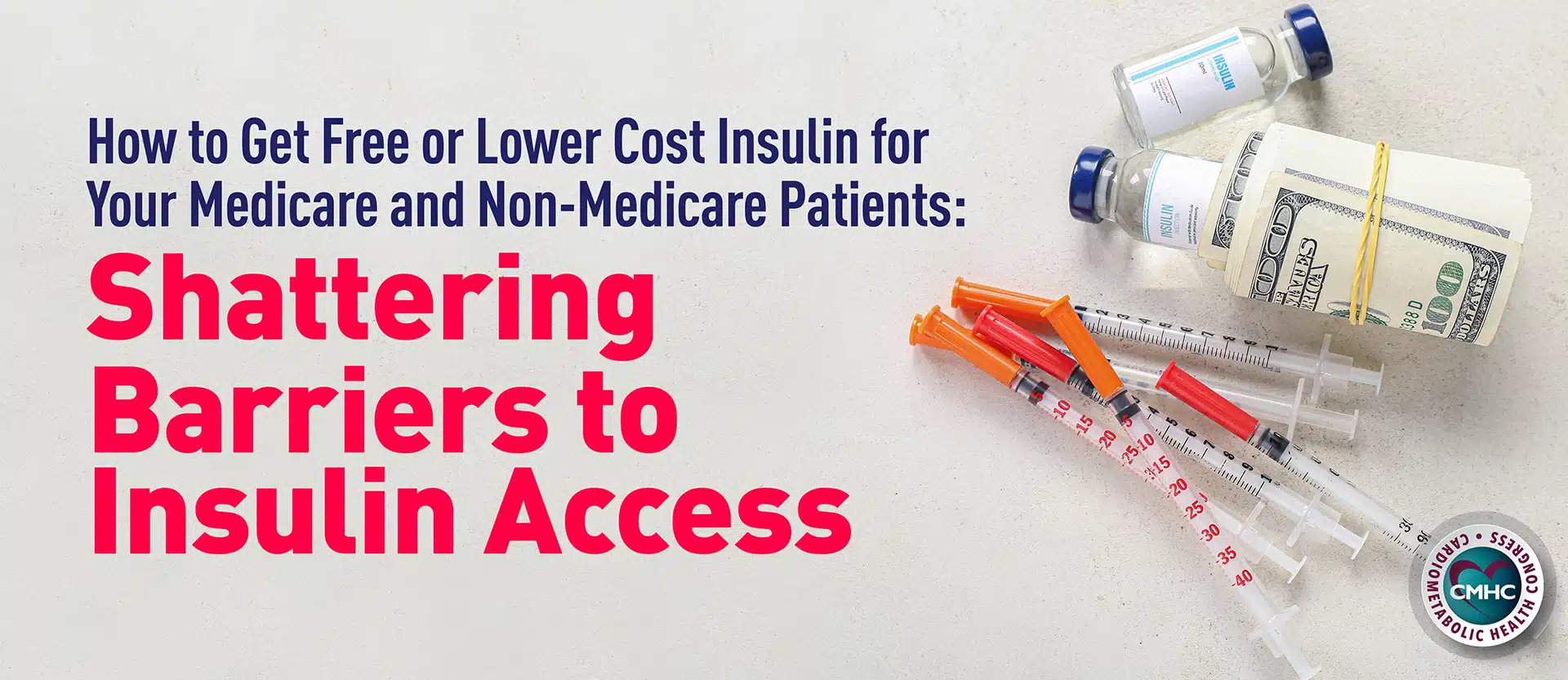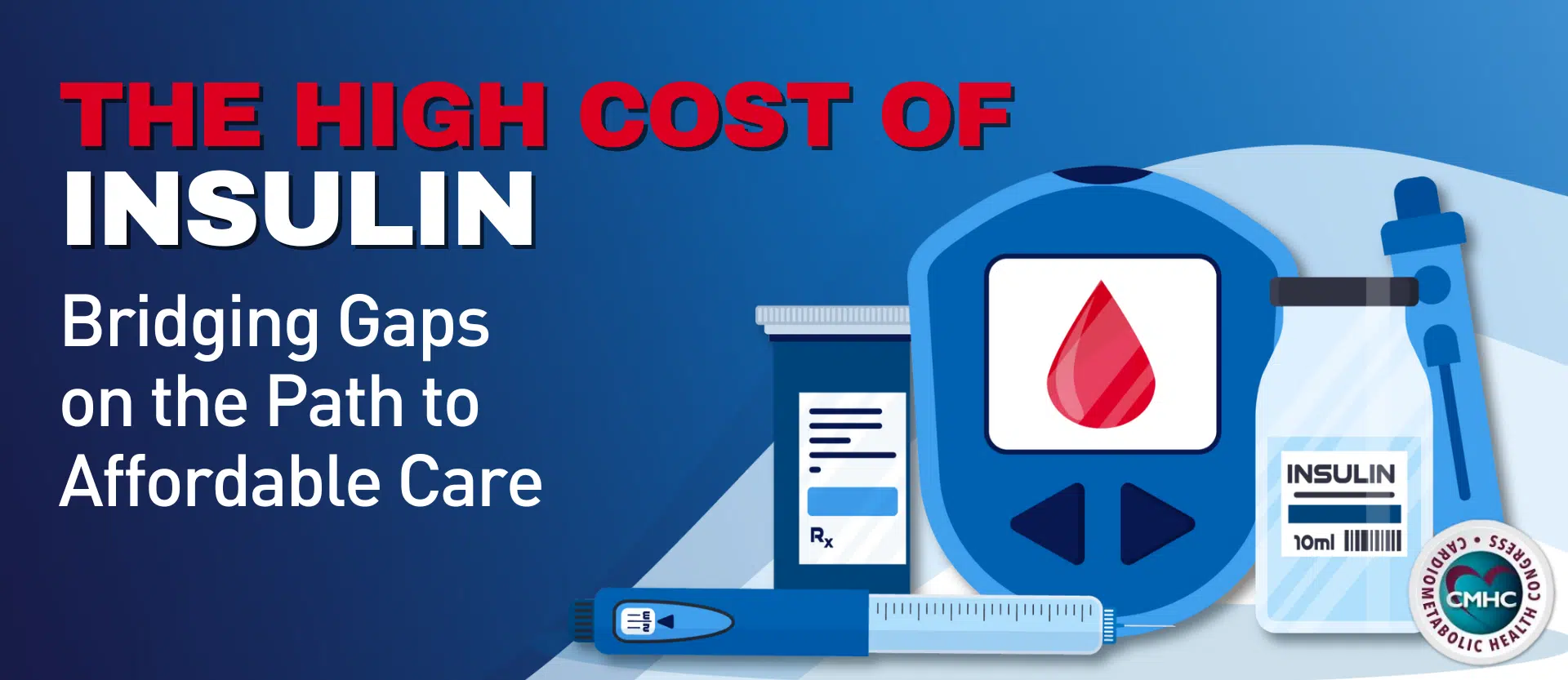Cardiometabolic Health Congress (CMHC) sat down with Melissa Magwire, RN, MSN, director of the Cardiometabolic Center Alliance, in honor of National Nurses Week 2023.
CMHC: National Nurses Week is celebrated each May 6-12, ending on Florence Nightingale's birthday. Are there any lesser-known nurses who inspired your path to this profession?
Melissa Magwire, RN, MSN: I think every nurse is going to say Florence Nightingale and I do [agree], but Clara Barton who founded the Red Cross here in the United States actually went over to Europe and brought the Red Cross back for what we know now today is the American Red Cross. She started on the battlefields during the civil war and jumped in and did nursing and provided that aid. But it’s the holistic approach that kind of symbolizes the Red Cross in the work she did – the very physical, in-the-moment, “what are the medical needs?” And then also looking at her patients holistically and how to support them on their recovery, and the psychosocial aspects as well. That’s really something that nursing strives to do, to really look at that patient and the totality of their disease – both urgent and then afterward.
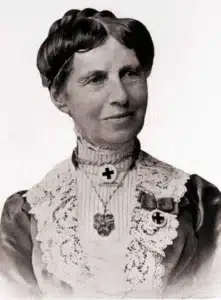
CMHC: Tell us a bit about your background and how you found yourself interested in caring for patients with diabetes and related cardiometabolic conditions.
MM: Interestingly enough, it started when I was in the 6th grade. We had to do an assignment where we traced a drop of blood through the circulatory system and I was enthralled with the heart and all things cardiac. So, I actually started as a new grad nurse in a cardiac step-down unit and worked in intensive care and cardiovascular services in the hospital for about 5 years. It became very clear early on that a large majority of my patients in the cardiovascular unit were living with some form of diabetes. So, after several years I decided to make that switch to outpatient to see if I could help prevent patients from having the comorbidities that I was treating in the hospital. So, I switched to adult endocrinology and became a certified diabetes educator, and about 5 or 6 years ago, as more and more drugs that were initially brought to market for type 2 diabetes and glycemic control were found to have cardiovascular outcomes, my two worlds sort of collided. I was very fortunate to help support Dr. Mikhail Kosiborod here in Kansas City to open up our first Cardiometabolic Center at Saint Luke’s, combining my two passions of cardiovascular disease and type 2 diabetes. Now I’m the program director of the Cardiometabolic Center Alliance which is a health care consortium across the country based on the model that we started and are still working with today in Kansas City.
CMHC: For complex cases where patients have some combination of diabetes, cardiovascular disease, kidney failure, obesity, or NASH, do you think the current system does a good job of comprehensively managing them? What can be improved?
MM: I think we’re getting there as far as comprehensive care. I think historically as our specialties grew we all did very well in our own specialties; we had nephrology we had cardiology we had endocrinology and hepatology. But we weren’t really doing that crosstalk. So, I think one of the things that both Dr. Kosiborod and myself and our peers across the country who are involved in cardiometabolic centers have echoed is that this is the most satisfaction as a practitioner that we’ve had in years. This coordinated approach that really looks at the cardiometabolic renal patient in its totality; breaking down those silos and delivering care in a very coordinated manner across the entire disease spectrum. Not just focusing on glycemic control or heart failure or NASH or obesity, but looking at it as an entire disease entity in itself. I think that’s what is really needed; to take on a whole population health initiative and make a big impact on the growing population of patients that are living with this disease that we now call cardiometabolic renal disease.
CMHC: The implementation of the electronic health record (EHR) presumably improved provider communication and documentation. Have you seen this translate into better patient care and outcomes?
MM: I think it can. I think EHRs have made a world of difference from [the perspective of] an ‘old-school’ nurse who 30 years ago was trying to decipher physician writing in a paper chart. It’s definitely a huge improvement, but you get out of health records what you put into health records and I think it’s very important to have that coordinated approach to not only the visit but the visit follow-up. How do you communicate with your peers electronically and how do you communicate with patients? I think one of the most advantageous things of the EHR is cross-talking with health systems. We can cross-talk with our patients and allow patients visibility into their health record, but also pushing things through patient portals, like after-visit summaries, letting the patient be able to communicate right into their EHR or their chart, I think it’s made a big difference in how we can further assess where our patients are and help implement more pathways to coordinated care.
CMHC: Any other thoughts on digital technology or artificial intelligence (AI) in the workplace?
MM: I think the sky’s the limit! I think when involving digital technology sometimes we get pushback to say our patients aren’t savvy, but I think our patients are often more savvy than we are. Everyone is consuming some form of digital technology now and anything that opens up access to care coordination or provider services to our patients is a benefit. We’re using a lot of digital health to add platforms for educating patients, for remote patient monitoring and virtual visits. I think one of the only positives to come out of the recent pandemic was the fact that we had to adapt very quickly to technology and do virtual visits allowing those patients that might not have had a chance to see a practitioner or come into the clinic now actually have that virtual technology at their fingertips. They have better, longer conversations with health care providers and their care coordinators virtually, so I think more to come on that. But I’m very excited about what the future holds.
CMHC: When did you first come to know about Cardiometabolic Health Congress (CMHC) and what makes CMHC's education different from that offered by other organizations that focus solely on diabetes or cardiovascular health education?
MM: I came across Cardiometabolic Health Congress in one of my professional email blasts that showed that there was actually a course that I wanted to attend. I got to know the fantastic CMHC team and spent some time with them, actually attending their Spring Symposium and their Annual Meeting. I was just blown away by the quality of the education, but also the quality of the faculty that they have working with them. It’s the key opinion leaders at their annual meetings that I was just blown away by the who’s-who, the thought leaders in diabetes, cardiovascular, obesity, lipids, heart failure … It was very refreshing to go to a course that I came away [from] with a deeper understanding of all of the different disease states and sequela that my patients are living with, rather than having to go to multiple different classes or different courses. So, it’s that combined focus on the entire patient and the entire disease state that I think makes [CMHC] so impactful and so meaningful.
CMHC: Can you describe a textbook cardiometabolic patient and how the newer understanding of these interrelated conditions informs their care in today's clinic as opposed to 20 or 30 years ago when most conditions were treated in silos?
MM: A typical patient that I still see every day in clinic would be someone living with type 2 diabetes that’s also unfortunately living with obesity, hypertension, hyperlipidemia, has some visceral adiposity so maybe some fatty liver disease, as well as the potential for some heart failure or diabetic kidney disease. These are folks that we see every day, day in and day out. Historically, 25 or 30 years ago, I would have focused on one thing. It could have been glycemic control; I would have certainly made sure they were on guideline-directed medical therapy for hypertension and lipids, but we didn’t take the onus of that [management]. Our patients often had to see multiple providers, keep multiple sets of instructions clear, and [know] which appointment do I go to, which physician fills this medication, who do I talk to about my blood pressure, who do I talk to about my blood sugar, who do I talk to about my shortness of breath from my heart failure?
I think what we’re doing now in a very care-coordinated, holistic view for that patient is giving them a one-stop shop and letting them feel like they’re part of that team. They have a centralized care coordinator and they have a practitioner team that’s going to take care of all of those needs in that cardiometabolic renal space and we typically – at least once a week or twice a week – hear from our patients, “Why didn’t someone do this before? I feel like I have a connection now to where I know who I need to call for any of these things that I’m facing with my health care.”
It’s a much more streamlined approach leading to better outcomes because patients feel like they have a little bit more control, and we see a little bit more adherence because there’s an understanding of what the patients need to do and the care that they need to help provide for themselves, as well.
CMHC: Anyone who's been cared for in a clinic setting most likely has a story about a certain nurse who took the time to not only care for their physical needs, but who made them feel safe, comforted, and heard. How do you maintain a positive and nurturing attitude when dealing with common practical challenges like being understaffed, under-resourced, or dealing with burnout?
MM: That is a great question because health care has always been stressful. But we know [it’s] even more so since the pandemic. In the last couple of years, we’re all understaffed and overworked but I think the thing that I focus on – and that my team focuses on – is that anyone sitting across from me on that table or in that chair could be a family member. Really putting that patient experience on yourself and realizing that this could be my loved one and how would I want them treated? How would I want them to get through the process in the most meaningful way to ensure they have a good outcome? Just realizing that we’re all in it together as corny or as cliché as that may sound, but that could be your loved one. Really providing that sense of care and [developing a] treatment plan that I would want my loved ones to experience, as well.


